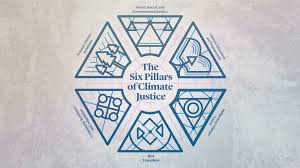From Courtrooms to Communities: Innovative Legal Pathways for Climate Justice and the SDGs

In the twenty-first century, conversations on environmental law and climate justice are no longer confined to the pages of international treaties or academic journals; they have moved into the courtrooms, parliaments, and most importantly, into the everyday lives of communities across the globe. The urgency of the climate crisis compels us to rethink how legal frameworks can meaningfully contribute to achieving the Sustainable Development Goals (SDGs). At Presidency University, particularly at the Presidency School of Law, this dialogue is shaping fresh academic inquiry and inspiring future legal professionals to bridge the gap between law and lived realities.
Courtrooms as Catalysts of Change
Over the past decade, climate litigation has emerged as a powerful instrument of accountability. Courts worldwide have become arenas where citizens, especially young people and indigenous communities, demand climate action from states and corporations. Landmark cases demonstrate that the judiciary can compel governments to align national policies with global climate commitments and SDGs.
This legal trend highlights that courts are no longer passive interpreters of law. Instead, they are transformative spaces where rights to a clean environment, intergenerational equity, and sustainable development are being articulated in new and creative ways. For law students and scholars at the Presidency School of Law, studying these cases offers both inspiration and a roadmap for how jurisprudence can directly shape climate futures.
Communities as Guardians of Justice
While courts play an essential role, they cannot operate in isolation. Climate justice must also resonate at the grassroots level, where communities face the immediate impacts of environmental degradation. Across India, local communities have long relied on customary norms and traditional practices to manage forests, water, and biodiversity. These practices, when recognized and integrated into formal legal systems, provide sustainable, context-specific solutions that align perfectly with SDGs such as clean water (SDG 6), sustainable cities (SDG 11), and life on land (SDG 15).
Innovative legal pathways are emerging when these grassroots practices converge with constitutional protections and international norms. For example, the legal recognition of the rights of nature and river personhood in India signals a paradigm shift in how law conceptualizes the environment, not merely as property to be exploited but as a living entity deserving respect and protection.
Bridging the Divide: The Role of Legal Education
This convergence between courtrooms and communities underscores the urgent need for legal education to be transformative. At Presidency University, the emphasis on research, experiential learning, and interdisciplinary approaches equips students to engage with climate justice not just as an academic subject, but as a practical challenge requiring empathy, innovation, and leadership. Moot courts, clinical legal education, and community engagement initiatives allow students to explore how legal strategies can amplify community voices and promote systemic change.
Toward a Shared Future
Achieving the SDGs is not a task reserved for policymakers alone. It requires a synergy of legal innovation, judicial courage, and community resilience. From climate litigation that sets global precedents to local traditions that offer sustainable blueprints, the journey toward climate justice is multidirectional. The challenge and the opportunity lies in connecting these dots.
As institutions like the Presidency School of Law nurture the next generation of legal minds, the message is clear: climate justice is not only about winning cases in court; it is about winning trust in communities. Only then can law truly become a pathway toward a just, sustainable, and inclusive future.
Written by,
Toshali Pattnaik
Assistant Professor, Presidency School of Law












 Rajanukunte, Yelahanka, Bengaluru, Karnataka, Pin: 560119, India
Rajanukunte, Yelahanka, Bengaluru, Karnataka, Pin: 560119, India
 +91 9022092222
+91 9022092222